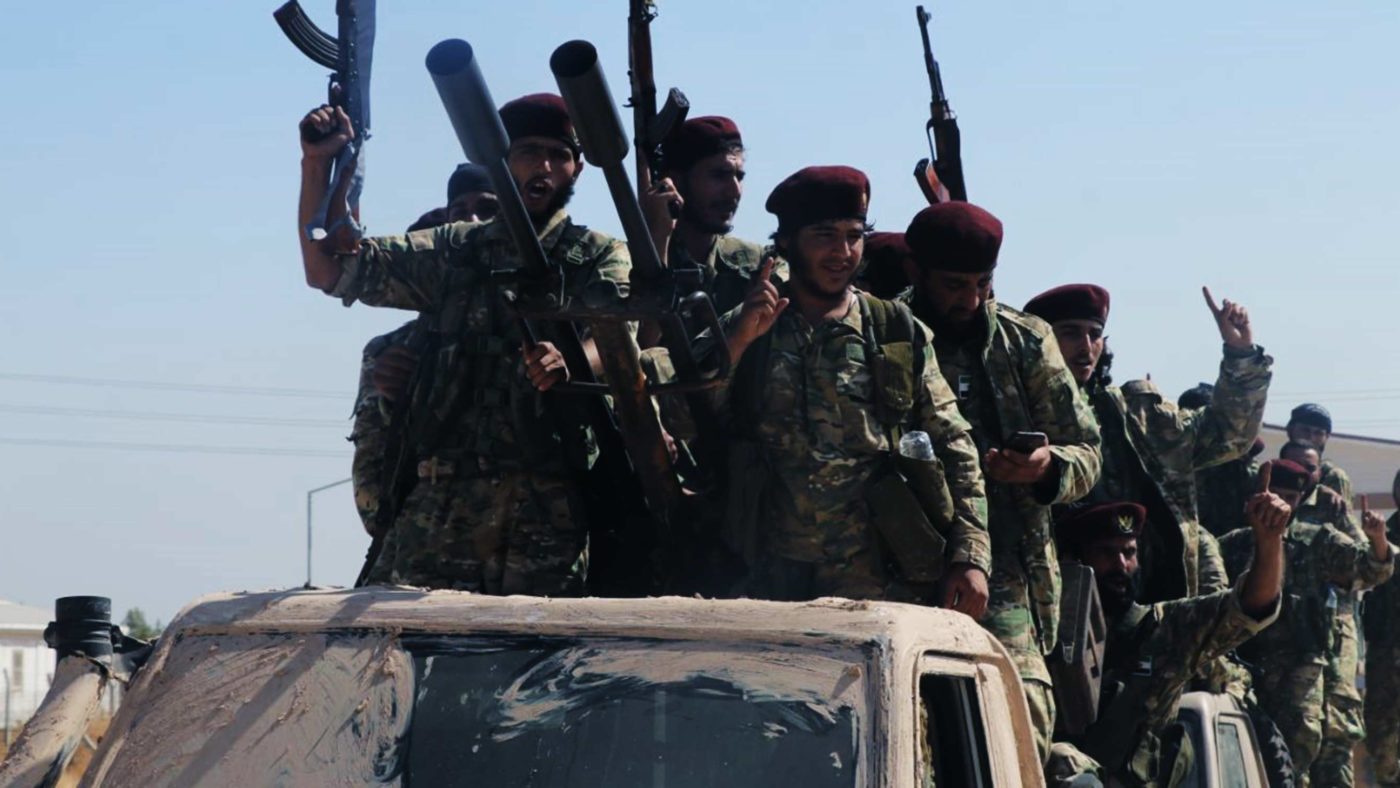On Sunday, the White House announced that ‘Turkey will soon be moving forward with its long-planned operation into northern Syria’ and that American forces, though they would not support this advance, would move out of the way to allow it to take place.
This announcement was unexpected and surprised many, the inhabitants of northern Syria among them. But notably, this statement also appears to have surprised Turkey.
Turkey has long held that it should create a ‘safe zone’ under its control in northern Syria. President Erdogan argued for the justness of this future operation at the United Nations in September. For Turkey, establishing a new Syrian safe zone has a number of advantages.
It would serve as the base for fighting the People’s Protection Units (YPG), the military wing of the Kurdish Democratic Union Party (PYD).
Turkey and the Kurds have a long and troubled history. The PYD subscribes to an ideology of ‘democratic confederalism’ espoused by Abdullah Öcalan, the figurehead of a Kurdish insurgency inside Turkey. Turkey has been fighting a rebellion led by Öcalan’s Kurdistan Workers’ Party (PKK) since the 1970s. This insurgency entrenched itself in northern Syria at the beginning of this century.
Later, the YPG fought against the rise of ISIS’ caliphate. As the campaign progressed, the YPG were the ground forces of the global coalition against ISIS, under the banner of the Syrian Democratic Forces (SDF). The YPG received American air support, capital and arms – to immense Turkish displeasure.
Previous Turkish activities in Syria include operation Euphrates Shield, in which a force of Turkish-backed Syrian rebels took much ISIS territory but were not allowed to capture Raqqa from the Islamic State before the SDF did so. Years later, in operation Olive Branch, Turkish and allied rebel forces took Afrin canton from the YPG.
So Turkey wants to deny the PKK and its supporters a Syrian base, better to defeat the insurrection within its own borders.
A Syrian safe zone would also, in Erdogan’s eyes, serve as a home for displaced Syrians living in Turkey, whose mere presence has become a serious political problem. He has proposed a mass deportation of millions of Syrians from their present countries of residence into this new safe zone, likely displacing Kurdish locals.
The scale of these plans, and the opposition each would inspire, had meant they cannot be done instantly. Before the American announcement, Turkey had begun to assemble its forces, and the forces of allied Syrian rebels, into a body which could be sent to fight if necessary. But all of this appeared on the horizon. Only last week, Turkey had settled for the YPG retreating from the Turkish-Syrian border, and dismantling some of its defences. They certainly did not see the safe zone goal as a near-term plan simply awaiting American approval.
When that approval was given, the White House encountered unexpected resistance of its own. Republican Senators, including Lindsey Graham, vowed to impose punishing sanctions on Turkey if it invaded Kurdish Syria.
Donald Trump was also accused – in order of decreasing legitimacy – of betraying American allies; caving in to wily Turkish diplomacy; and of being motivated solely by his own business interests in Istanbul. Others noted that ISIS fighters and supporters, local and foreign, who were captured by the SDF may now be at risk of being freed, broken out or released in amnesties. Turkey has promised to assist in repatriating foreign fighters, but not holding them indefinitely. And then there’s the possibility that ISIS will benefit from its enemies fighting among themselves, offering them an opportunity to regroup and redeploy.
In the face of more criticism than he expected, Trump rowed back a little on his endorsement. He threatened his own retribution against the Turkish economy if Turkey did anything ‘that I, in my great and unmatched wisdom, consider to be off limits’.
Last December, Trump claimed he would soon withdraw all American forces from Syria, declaring victory against the Islamic State. Then, as now, a stop-gap solution to American isolation was proposed, including Turkish movement into the parts of Syria where Americans were stationed.
American forces did not withdraw. Trump’s irritation at being unable to do as he pleases with them remains. Now, as then, he laments endless wars and ‘Fighting between various groups that has been going on for hundreds of years’ on Twitter. But he has not retracted his decision to allow Turkey to begin its Syrian operation. As a result, Turkey have begun their incursion into Syria’s north-east – named ‘Operation Peace Spring’ – with fighting already underway in Ras al-Ayn and Qamishli, and disputed reports of attacks elsewhere.
The scale of this advance into north-eastern Syria remains difficult to determine. Some indications suggest that it will be mainly symbolic and extend only to the capture of a few significant settlements; others argue that, now Turkey has been given the opportunity to deny its insurgent enemy a home in Syria, it will do all it can to achieve this long-held and, indeed, ‘long-planned’ ambition.
One thing at least is clear: the United States’ policy on Syria is set to be as confused and inconsistent as it has been for the last ten years of the conflict.
CapX depends on the generosity of its readers. If you value what we do, please consider making a donation.


